Who: These formal photos of groups of soldiers usually help us out by having a sign explaining who they are.
So we're looking at the Junior Non-Commissioned Officers from the 88th Company of the Royal Garrison Artillery.
The Royal Garrison Artillery (RGA) was the part of the British Army responsible for manning the coastal defence batteries around the British Empire. These gun batteries defended harbours from attack by enemy ships.
There were three RGA Companies here in Hong Kong, the 83rd and 87th, and the 88th who are shown here. Hong Kong was also the headquarters for the Hong Kong-Singapore Battalion RGA, which was made up of Indian soldiers. I think these two gentlemen in the 88th Company photo are Indian, suggesting there was some exchange of men between the two groups.
The main photo doesn't show the whole company, just its Junior Non-Commissioned Officers. In most of the army they'd be the lance corporals and corporals, but in the Royal Artillery they're known as lance bombardiers and bombardiers. They wear chevron-shaped stripes on their upper arms to show their ranks, so we'll expect to see all the men with either one stripe (see B below, a lance bombardier) or two (see A below, a bombardier).
There are a couple of exceptions. The senior man in the group usually gets to sit front & centre. In this photo it's the man marked D, who doesn't have any stripes on his upper sleeves.
Instead I've highlighted the crown badges on his forearms, which I think mean he was the Company Sergeant Major.
The other exception is the company's pet dog at top right! He was unable to keep still for the camera and so is looking a bit blurred
When:The sign already gives us an idea of when the photo was taken, but a note on the back pins down the exact date to 8 January 1919.
That means the photo was taken less than two months after 11 November 1918, the day the fighting in World War One had stopped. During the war, the artillery's large guns and howitzers were kept behind the infantry's lines for relative safety, which meant they had to fire over longer distances towards targets that were out of sight. The technical skills of the RGA were in great demand to cope with this.
I wonder how many of these men had spent time along the Western Front, and whether a posting to Hong Kong was used to give men a chance to rest and recover?
Where: We can make out the arches of the building in the background, but that was a common feature of the barracks around Hong Kong. Does anyone spot any features that identify the building, or know where the 88th were based?
What: Enough badges to keep a cub scout happy!
We've already noted the downward-pointing chevrons on the upper arms denoting rank. Some of the men also have a chevron on their lower left arm that points up.
These were 'good conduct stripes', where the first stripe was awarded to privates and lance corporals / lance bombardiers after 2 years service without being formally disciplined. You could keep adding stripes - the next was after 6 years - but no-one here has more than one. Either they were still relatively new to the RGA, or they were a mischievous bunch!
Over on their lower right arms, many men have a set of smaller chevrons, also pointing upwards.
These recorded the number of years the soldier had served overseas (ie outside the UK). Not that overseas postings were guaranteed, as the RGA also manned gun batteries around Britain's coast. So if I'd joined up with dreams of seeing the world, I could still have ended up with the 44th or 57th Companies defending the Milford Haven waterway, and within walking distance of home!
The overseas service chevrons were in two different colours, with a single red chevron if you were overseas before the end of 1914, then from 1915 onwards you added one blue chevron for every year you were outside the UK. Looking at the men above, I think A has one red + three blue, B has three blue, and C has one red + four blue.
You'll notice that B also has a circular badge on his upper right arm, above his lance bombardier's stripe. It's a capital letter 'R' above a wreath, and signifies this man was a qualified rangefinder. The badge that F is wearing is clearer to see.
The badge on R's right arm is a similar design, but with a capital 'L' this time. That shows his proficiency is gun laying.
Here's one on the upper left arm, a cross that I believe means he has some medical skills - can anyone confirm?
This man wears a badge showing crossed flags on his lower left arm, showing he's a signaller. Although morse and telephones were already in use, he still had to learn to how use flags to send messages by semaphore.
Finally, looking back to A and C again, they're wearing medal ribbons above their left breast pockets. Is it possible to identify the medals without knowing what colour the ribbons are?
I'm no expert on military history, so please leave a comment below if you spot any mistakes or can tell us more about this scene.
Gwulo photo ID: A555
Further reading / exploring: If you've got Volume 3 of my books, pages 74-79 have more photos and stories about Hong Kong's coastal defence batteries and the soldiers that manned them. (And if you haven't got the book, here's how to order a copy!)
Ruins of many of Hong Kong's old coastal defence batteries still exist, and make for an interesting outing to explore. At the time of writing, Hong Kong's Museum of Coastal Defence is closed for a revamp, but there are other batteries whose ruins are publicly accessible - check out Rob's maps to see what's out there.
More resources:
- List of RGA Companies
- Royal Garrison Artillery
- Good Conduct stripe
- Overseas service chevrons
- Trade, Proficiency & Skill at Arms Badges,1900 to approx 1960: page 1, page 2, page 3
- Gun Laying
- Crossed flag signaller's badge
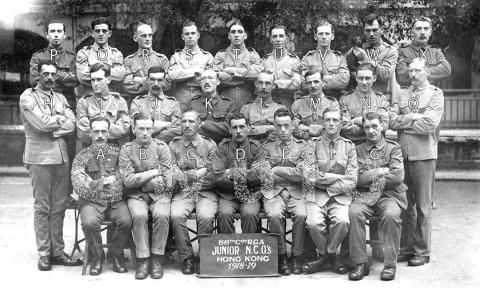

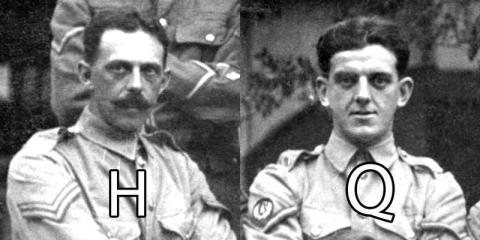

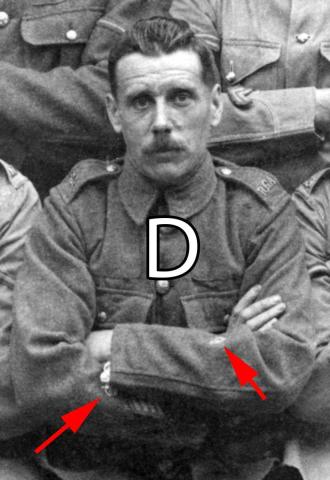
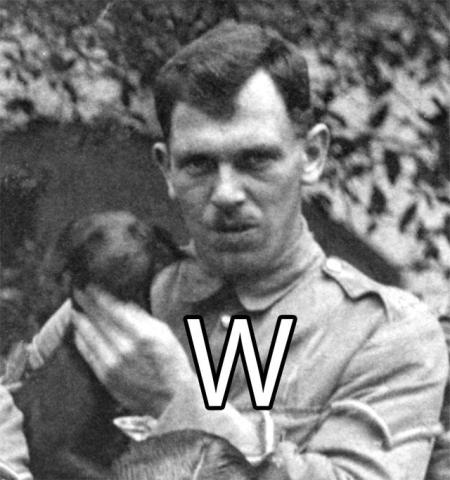
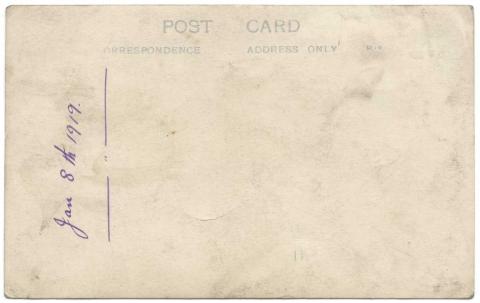
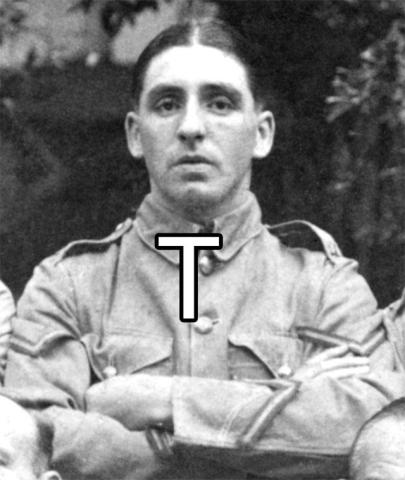

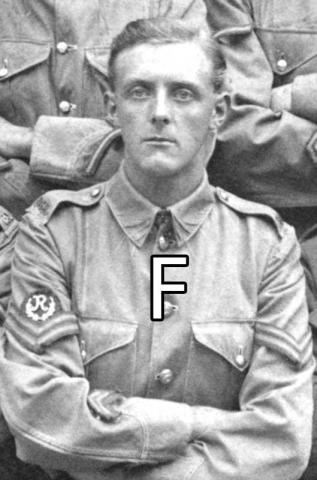
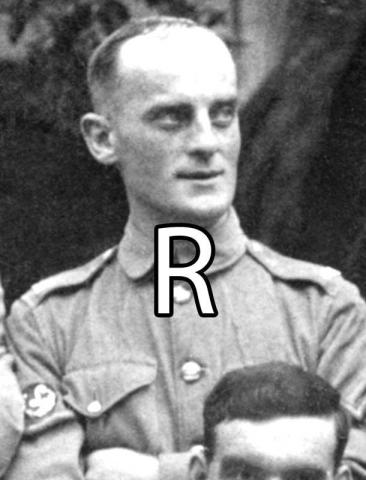
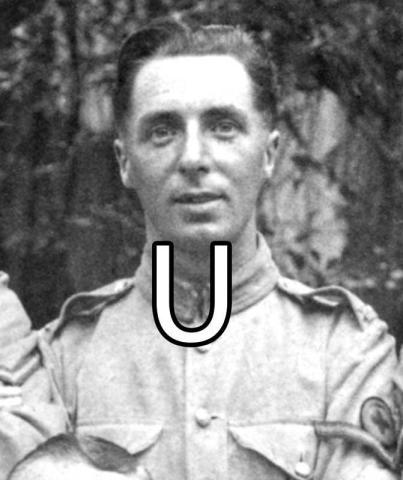
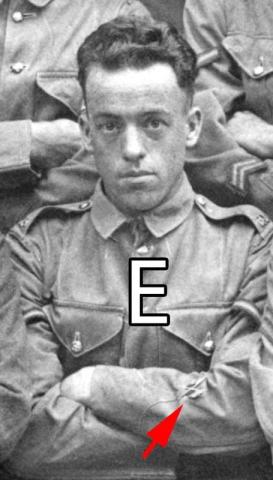
Comments
Medal Ribbons on A & C
I would take a guess that the medal ribbons worn by A & C respresent the China War Medal of 1900 awarded to British servicemen who participated in the 8-Power Expeditionary Force for the " Relief of Peking" during the "Boxer" Uprising.
The actual colours in the ribbon were crimson for the centre band with two narrower bands of yellow on the edges. Past experience has indicated that reds show up as very dark grey in greyscale images and yellows and greens appear almost white.The bright and blurred shade on the centre band of the ribbon worn by A is perhaps due to direct sunlight reflection or a blemish on the photo.The bright sunlight is also reflecting off the centre portions of their faces causing a white blur.
You may see an example of the China War Medal on this link:: China War Medal
The ribbons are unlikely to be related to the 1st World War because the "British War Medal" medal was not instituted until July 1919 , several months after this picture was taken.
Gunner Ranks
In the Gunners we have Battery Sergeant Majors who is equivalent to a Company Sergeant Major in the infantry, and other arms.
RGA Medal Ribbons
I doubt they are China 1900 ribbons,that would indicate 19 years between that action and date of the photograph.More likely related to conflicts on the Indian borders.ie Indian General Service medals.
So how about suggesting which
So how about suggesting which India service medals might match? Both A & C look as though they are already in their forties and therefore old enough to have served as young soldiers in the 1900 campaign. There are over a hundred members of the RGA listed as recipients of the China War Medal in the medal rosters. These are currently downloadable (and free of charge) from the National Archives website.
88th RGA location
According to The Directory & Chronicle for China, Japan, Corea, Indo-China, Straits Settlements, Malay states, Siam, Netherlands India, Borneo, the Philippines, etc for the year 1910, they were based at Victoria Barracks, with the Officers' Mess at Bowen Road. Interestingly, I couldn't find them listed after 1918 (up until 1921 anyway - I didn't check the years after that). Perhaps the military were too heavily depleted in HK to warrant a specific mention?
I love this subject as you
I love this subject as you know, but it has raised a number of questions.
These are totally different to people wearing the SB badge which means Stretcher Bearer). These people would have some basic knowledge of First Aid and Bandaging etc as that was necessary for bringing in the injured/wounded and the dead back to the Field Hospitals etc.
Overseas Service , Wounded and Good Conduct Stripes
A good observation by 'HK Bill'that all those inverted chevrons seemed to have been pinned on just for the occasion of this photograph. The explanation could be that having these stripes on everyday clothing simply made the laundering and ironing of the uniforms more troublesome, so they were only worn for formal occasions.
There is an explanation about these various stripes and their award on the Wikipedia site HERE but as with all Wikipedia postings, they can frequently be suspect for authenticity. The reference source links in the footnotes lead to dead websites or expired pages, so some verification is still needed.
Chinarail, I was not
Chinarail, I was not referring only to the inverted chevrons being only pinned on, but all badges, of rank, of trade as well. Your explanation that these badges were only used for formal occassions is very misleading and incorrect. Having served in the British Army, I know these badges must ALWAYS be correctly sewn on. As for your remarks about wikipedia, I am not surprised you felt pages were dead or expired as the search was incorrectly entered "chevro instead of chevrons". If you search for the complete word chevrons, you might find very interesting explanations.
Demobilization
Looking at the papers of the day, demobilization accelerated from January 1919. The aim of the Home Government was to demoblize servicemen over the age of 35. See here Given 1918-1919 is shown, the photo may show servicemen about to return Home.
@ "Your explanation was very misleading and incorrect"
HK Bill, if you read my words carefully, I wrote only "the explanation could be..... " This was not case of claiming that this was definitively the answer to the puzzle.. It was a discussion point only..... and therefore "very misleading" is somewhat harsh . "Incorrect" perhaps yes, but I rest my case.
The Wikipedia link which I entered was an incorrect earlier seach and I apologize for this . The link has been corrected .
Apologies to Chinarail, but
Apologies to Chinarail, but the could be's, and not wishing to upset the writer is one thing, but that is "wrong". I have no wish to upset or anger anyone, but there are many people out thre that do not follow due diligence and take these mis-interpretations as gold. Then they go off and spout the incorrect informations in classrooms and to people that don't know any different. And before you know it, the correct history has been deflected to read something else. I am only trying to ensure that this does not happen. Sorry for your miffedness.
Miffedess & "posed" photos
HK Bill, .... Not "miffed", just pointing out that this is a discussion forum.
I like the 1969 picture of radio operator "Bill" asking for directions from a policeman. Is that you and were you really lost?
The photo looks as if it might "posed", perhaps for a police/military public relations photo? . What was the occasion ? Please note I qualified the "posed" with a "might"
88 Coy RGA
You will find the history of this Battery in Hong Kong from 1904 to 1923 in " The Guns and Gunners of Hong Kong " by Rollo.It contains more photos of the Junior NCOs.
Rank badges
I agree with the comment above that the Gunner equivalent of Company Sergeant Major is Battery Sergeant Major but would point out that the Senior NCO in the front rank is a Regimental Quartermaster Sergeant who, at the time of this photograph, wore four inverted chevrons topped by a crown this was later changed to a crown surrounded by a laurel wreath.
1919 88th Coy R.G.A. Junior N.C.O.'s
Thanks for all the replies with additional information about the scene.
I'd also noticed that the badges weren't sewn on, but hadn't realised that's unusual until I saw Bill's comment. It's clear this would never have happened in the 1960s when Bill was serving, so I wonder why it happened back in 1919 when this photo was taken? Following 1314's lead, there's a photo on page 100 of The Guns & Gunners of Hong Kong that shows The Junior NCOs Club 88 Company RGA circa 1914. The copy of the photo in the book isn't very sharp, but again their stripes don't look as though they're sewn on. This is just a guess, but could it have been connected with shortages of uniforms around the time of WW1 - so the men just borrowed a formal jacket when needed for occasions like this, but didn't own one that they could sew their badges on to?
The only other photo I have of the RGA shows men of the 87th company in 1911, but as they're wearing jumpers instead of jackets, and I don't see any stripes, it doesn't add anything to the discussion.
The overseas service chevrons won't appear in many photos as they were only in use for around five years. The notes at https://www.researchingww1.co.uk/overseas-service-chevrons explain: "They are also useful for dating photographs as they weren't authorised until December 1917 and were discontinued in 1922."
@Harry1, I haven't seen the the "four inverted chevrons topped by a crown" badge, but are its chevrons the same size as the stripes on the upper arms of B below? The inverted chevrons on D's forearm look much smaller, which made me think they're the overseas service chevrons that are mentioned above, and are also worn by B and C. See what you think:
Regards, David
Where was the photo taken?
Just a thought (and please be gentle if shooting me down!) but is it possible the photo was taken in the U.K.?
RQMS badge
David. You can just see the crown on top of the inverted stripes. If you Google "WW1 rank badges" you will see the original badge.
re: Where was the photo taken?
Derek, as the sign in front of the men says "Hong Kong", and the 88th Company RGA stayed in Hong Kong into the 1920s, Hong Kong is the most likely location. Had you seen any other photos of them in the UK?
re: RQMS badge
Harry, thanks for the tip - that's a lot of badges!
The closest I got was four inverted chevrons topped by an eight-pointed star, see https://www.sofmilitary.co.uk/ww1-regimental-quatermaster-sergeants-ran…;
Here's an actual uniform, dated to pre-WW1 but useful as it shows how the inverted chevrons looked when worn: https://gmic.co.uk/topic/63855-wwi-british-field-artillery-uniform/
I note that the inverted chevrons on that old uniform were full size (ie the same size as a chevron worn by NCOs), and that they were worn on both arms. Looking back to our man in the 1919 photo, he's wearing a set of small inverted chevrons, and only wears them on his right arm:
So they still look to me to be a crown on each arm, which thanks to Ronald I now know means a Battery Sergeant Major, and one set of small inverted chevrons which record his overseas service. There's a photo of a man with the same set of badges titled "A Company Sergeant Major wearing the post - 1915 rank", about half way down the page at https://www.kaisersbunker.com/ceftp/ranks.htm
I found this website that
I found this website that says the 88th stayed in HK throughout the war to garrison Hong Kong so I guess it must have been taken there! Not sure of the reliability of the website though! https://www.greatwarforum.org/topic/80451-royal-garrison-artillery/
pinned on badges
an assumption, could this have been a badging ceremony. Promotions, awards etc and this is the official photo of the occasion?